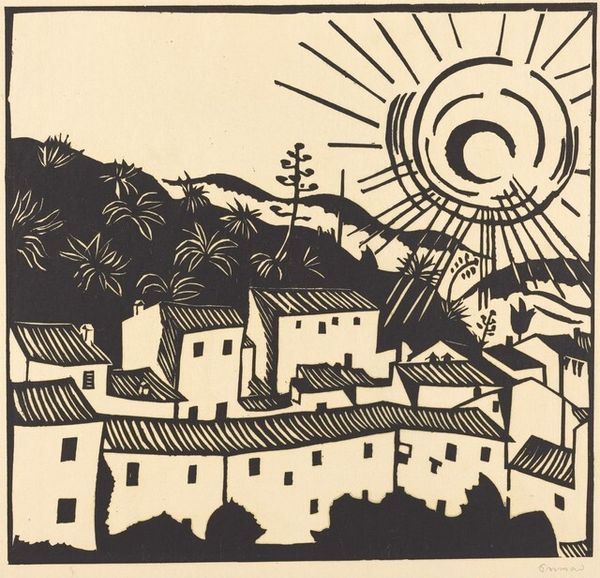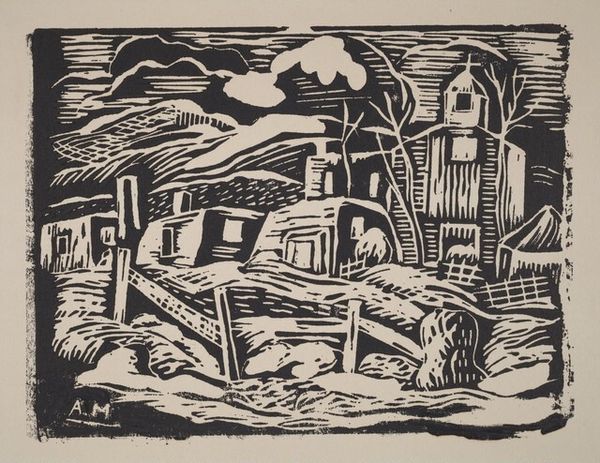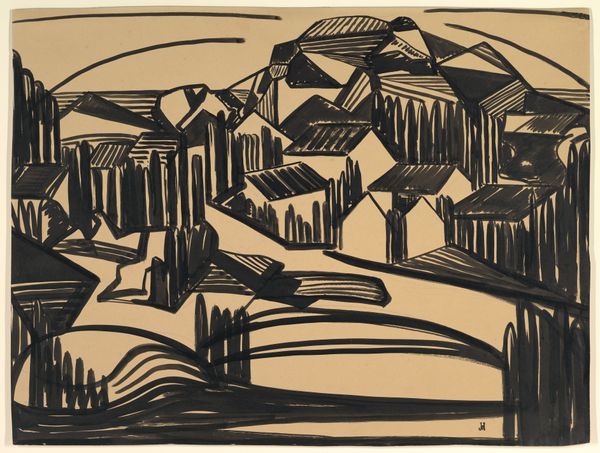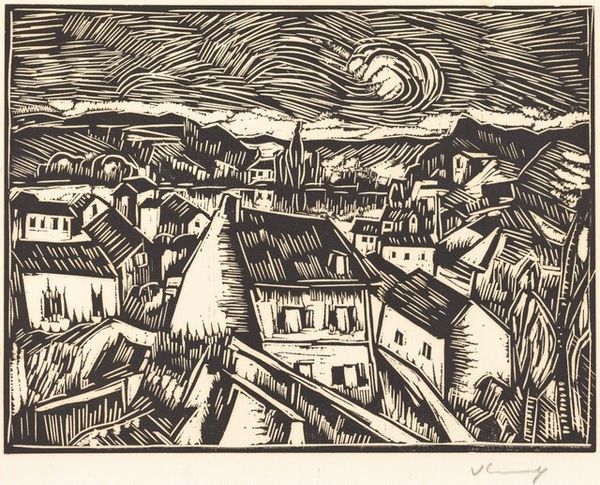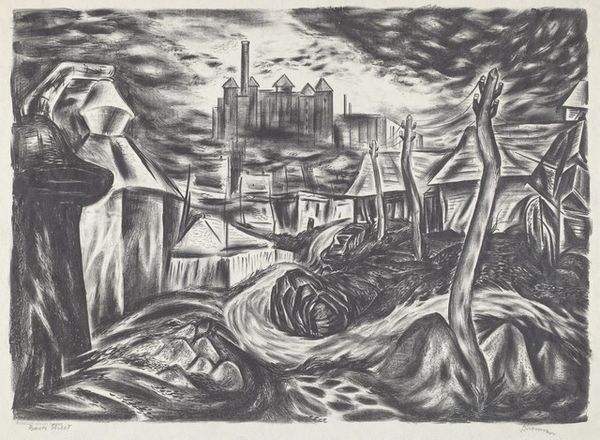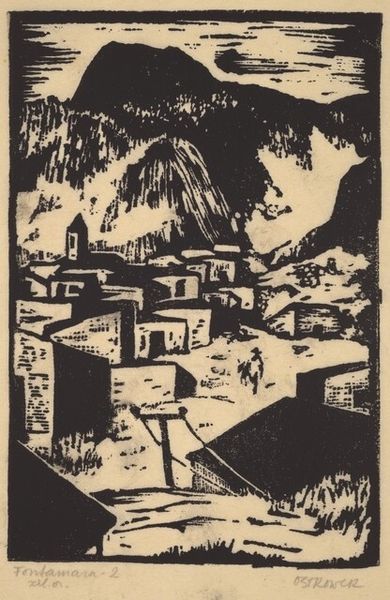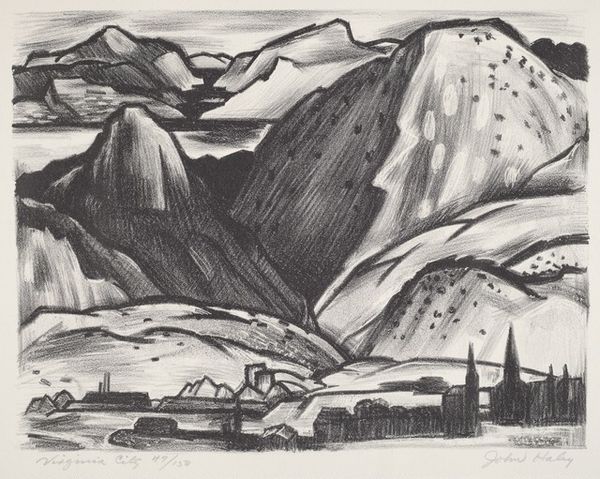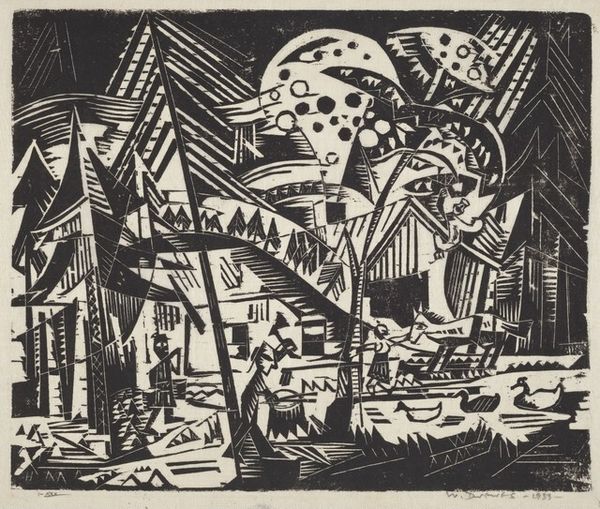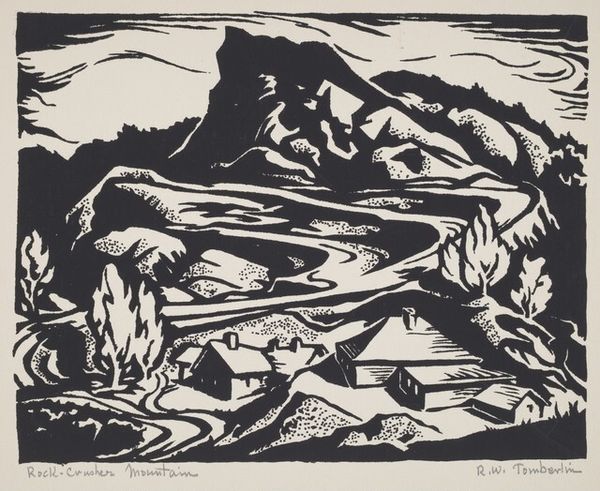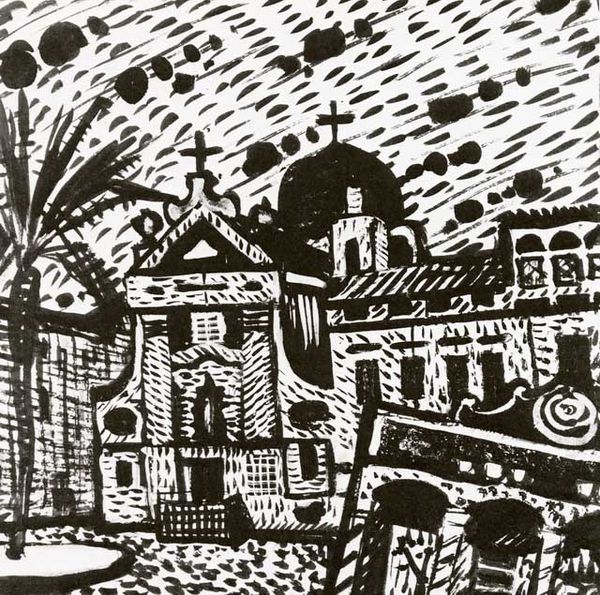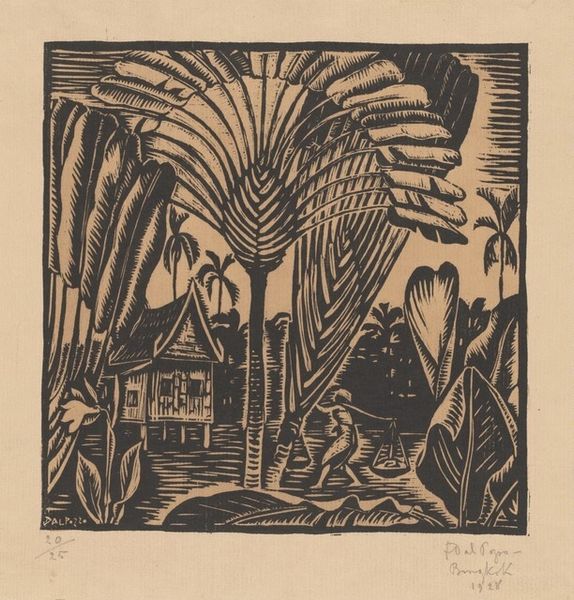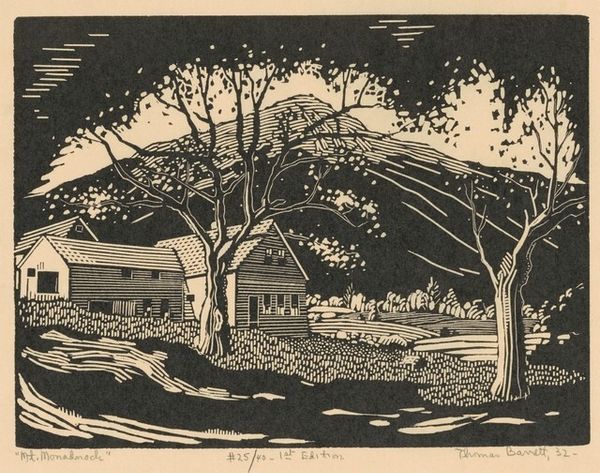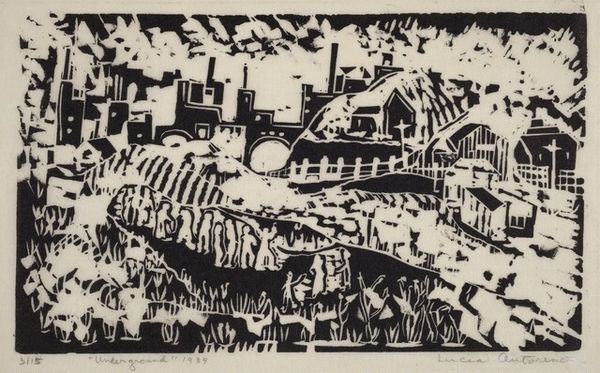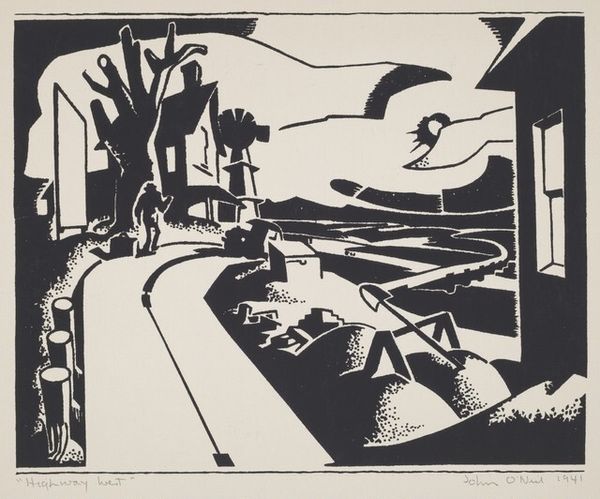
print, woodcut
# print
#
landscape
#
german-expressionism
#
geometric
#
woodcut
#
line
#
cityscape
Dimensions: block: 24.1 x 32.4 cm (9 1/2 x 12 3/4 in.) sheet: 32.4 x 45 cm (12 3/4 x 17 11/16 in.)
Copyright: National Gallery of Art: CC0 1.0
Curator: Here we have Richard Seewald's 1921 woodcut titled "Ascona," a compelling example of German Expressionist printmaking. The stark contrast and angular forms immediately grab your attention. What’s your take? Editor: Immediately, I’m hit with a sense of almost gothic… tranquility? The high-contrast makes it seem like it is in the middle of a storm. It's unsettling, yet also deeply peaceful; like the calm in the storm, observing nature and time. A very somber cityscape! Curator: Precisely. The black and white, achieved through the woodcut process, intensifies the emotional impact. Seewald has carefully carved away material, leaving bold lines and shapes to define the composition. Notice the mountains looming in the background; then our attention quickly dives into the intricate carvings defining individual dwellings in Ascona. The labor speaks! Editor: Yes! It almost reminds me of certain harsh parts in some poems by Emily Dickinson, or perhaps some gothic novel landscape. How interesting that a "simple" scene becomes almost a character of a deeper more intimate tale of selfhood. I mean, if art isn’t there to remind us, the viewers, of our most basic and core emotions, what else should? It transcends technique; it becomes experience! Curator: Indeed. Considering its German Expressionist roots, one cannot help but to explore Seewald’s concerns during such politically polarized times in Europe. His engagement with materials to echo turmoil by crafting an emotionally potent landscape definitely positions “Ascona” within the critical and challenging discourse of his period. How consumption is reflected in society as well! Editor: It leaves me contemplating the stories hidden within the buildings and wondering who looks out through the windows! All crafted from this intense dichotomy between carving away what is unwanted. Maybe those unwanted parts could become beautiful on their own. I’m so moved. It inspires. Curator: Agreed. The woodcut, in its deliberate process, is both a testament to skill and reflection. Ultimately, the artist provokes thoughtful dialogue with simplicity. The consumption of the gaze can sometimes tell us what consumerism might want to hide. Editor: I suppose that sometimes the simplest gestures have the strongest voices, in order for us to fully comprehend a deeper, more profound idea or truth!
Comments
No comments
Be the first to comment and join the conversation on the ultimate creative platform.
